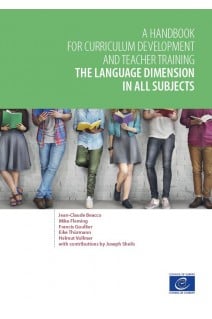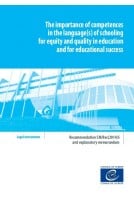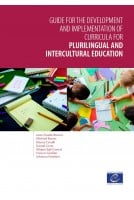



Mastering the language of schooling is essential for learners to develop the skills necessary for school success and for critical thinking. It is fundamental for participation in democratic societies, and for social inclusion and cohesion.
This handbook is a policy and working document which promotes convergence and coherence between the linguistic dimensions of various school subjects. It proposes measures to make explicit – in curricula, pedagogic material and teacher training – the specific linguistic norms and competences which learners must master in each school subject. It also presents the learning modalities that should allow all learners, and in particular the most vulnerable among them, to benefit from diversified language-learning situations in order to develop their cognitive and linguistic capacities.
Preface
Introduction
CHAPTER 1: The language dimension in all subjects: an important issue for quality and equity in education
1.1. The language of schooling – academic language use
1.2. Preparing and qualifying for the knowledge society
1.3. Equity and quality in education
CHAPTER 2: The role of language in the construction and application of knowledge
2.1. The role of language in knowledge building
2.2. The conventions of communication in science, technology and the humanities
2.3. Language and schooling
2.4. Academic language competence
2.5. Subject literacy
2.6. Implications for practice
CHAPTER 3: Forms of classroom communication and the acquisition of subject-specific knowledge
3.1. Presentation by the teacher
3.2. Presentation with directed interaction (scripted lesson)
3.3. Questioning and discussion
3.4. Exchanges among pupils
3.5. Note-taking and summarising
3.6. Presentation by one or more pupils
3.7. Reading the textbook or authentic texts
3.8. Production of written texts
CHAPTER 4: Ac quiring a command of academic expression
4.1. Objectives for different curriculum levels
4.2. Bridges between genres
4.3. Verbal characteristics of academic expression
CHAPTER 5: Language diversity, subject literacy and academic achievement
5.1. Points of departure
5.2. Achievement gaps, academic literacy and the advantages of content-based language learning
5.3. Provision for students with no or very limited proficiency in the dominant language of schooling
5.4. Provision for the development of academic literacy
5.5. Provision for the development of plurilingual competences
5.6. Resume and outlook
CHAPTER 6: Building up a command of the language of schooling during primary education
6.1. The benefits of defining linguistic objectives
6.2. The “discursive leap” when children start school
6.3. Appropriate strategies for primary education
CHAPTER 7: Language as subject
7.1. Approaches to language as subject
7.2. The dimensions of language as subject
7.3. Language varieties
7.4. Implications for practice
CHAPTER 8: Subject-specific language requirements in secondary education
8.1. Subject-specific sensitivity and language education
8.2. Mathematics and its characteristic contribution to language education
8.3. Sciences and their characteristic contribution to language education
8.4. Social sciences and their characteristic language requirements
8.5. The role of scaffolding in language-sensitive content teaching
8.6. Challenges
CHAPTER 9: Teaching approaches
9.1. Language and learning
9.2. Approaches to writing
9.3. Approaches to reading
9.4. Approaches to speaking and listening
9.5. Classroom culture
CHAPTER 10: Curriculum development
10.1. Variety of approaches to curricula
10.2. Subject approach to curriculum design (micro level)
10.3. Formulating a national generic framework in Norway (macro level)
10.4. A structural approach to curriculum design in North Rhine-Westphalia, Germany
10.5. Typology of procedures
CHAPTER 11: The language dimension in initial teacher training and continuous professional development
11.1. Teacher training and professional development on a supranational level
11.2. Teacher training and professional development on a national level
11.3. Language advisors and literacy coaches on a regional and local level
11.4. Bottom-up strategies for school and classroom development
CHAPTER 12: The quality of training related to the linguistic dimensions of subject-specific teaching
12.1. The overall quality of training: overall assessment criteria
12.2. Quality of the curriculum and evaluation of its implementation
12.3. Assessment of learning outcomes
Conclusion
Appendices
Appendix 1: Recommendation CM/Rec(2014)5 of the Committee of Ministers to member States on the importance of competences in the language(s) of schooling for equity and quality in education and for educational success
Appendix 2: References and proposals for further reading
Appendix 3: Language-sensitive teaching of so-called non-language subjects: a checklist
Télécharger un extrait (1000)





Mastering the language of schooling is essential for learners to develop the skills necessary for school success and for critical thinking. It is fundamental for participation in democratic societies, and for social inclusion and cohesion.
This handbook is a policy and working document which promotes convergence and coherence between the linguistic dimensions of various school subjects. It proposes measures to make explicit – in curricula, pedagogic material and teacher training – the specific linguistic norms and competences which learners must master in each school subject. It also presents the learning modalities that should allow all learners, and in particular the most vulnerable among them, to benefit from diversified language-learning situations in order to develop their cognitive and linguistic capacities.
Attention, en vertu de nos conditions générales de vente, l'achat des PDF/epub est réservé aux particuliers.
